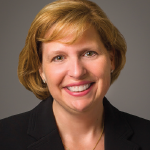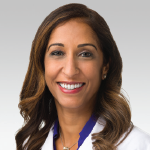
Dr. Jonas
Talk with your division chief and other faculty to decide what types of fellows you want to recruit and how many you can support. Are you looking for research-oriented fellows? Do you want fellows who are interested in community practice? Do you have a particular clinic in lupus, for example? Make sure all interviewers are on the same page about what your program offers and that your faculty know the program inside and out so they can answer applicant questions—or know where to quickly find answers.
Another important step is to make sure your program’s website is up to date and covers everything applicants need to know about your program. Ensure all the links work. This will be potential applicants’ first stop, and you want it to reflect well on your program.
The next step is to become familiar with the major portals. Prospective fellows apply through the Electronic Residency Application Service (ERAS) and match in the National Resident Matching Program (NRMP). Your program must be signed up to participate in both systems. Many GME offices do this, but it is wise for you to double check. If your fellowship program isn’t already set up in the ERAS system, your GME office may have someone who can assist you.
In July, candidates begin submitting applications for fellowships through the ERAS website for the following year’s fellowship program. You should begin reviewing applications in late July as soon as the site opens to programs. This year, applicants can start submitting their applications on July 7. At 9 a.m. EDT, July 21, fellowship programs can begin reviewing applications.
Also in July, it’s time to plan for the interview season. You’ll need to get faculty schedules in order and line up rooms for interviews, whether they will be held virtually or in person. Plan how the interview day will look and ensure your current fellows will be available to talk separately to interviewees at some point in the day.

Dr. Dua
Organization is crucial as you plan for upcoming interviews, but you also need to stay flexible and plan for contingencies. People will cancel interviews. Faculty will get sick. Be ready to call on other people or pull someone else up from the list of applicants to fill a slot. Have a backup list of people who were on the cusp of being offered an interview who could be called on to fill a newly open slot. Having a system for filling holes will make your application season less stressful.
As soon as possible after each interview day, standardized evaluation forms for each applicant should be collected from interviewers. As your committees conduct interviews, you want to know how well the applicant fits in your program. This feedback is important when developing your final rank list.
You must certify your rank order list (i.e., the list of candidates you interviewed in order of preference for your program; this is developed by the program director with input from all faculty) prior to the deadline in November. It is a good idea to coordinate with your GME office, program coordinator or division chief to ensure this step is completed. Fellow candidates make their own program rank lists in order of preference based on their interviews. The NRMP uses these data from fellowship programs and the candidates to make the final matches.
In December you’ll find out who matched for the next year’s fellowship program.
Timeline for New Fellows
In July, you’ll be onboarding new fellows and introducing them to the hospital system. After orientation, letters need to go to the ACR so fellows can apply for ACR membership, an eligibility requirement for the Fellows-in-Training (FIT) scholarship (https://tinyurl.com/zxufyk55) for ACR Convergence, held in November. You can use a template letter or ask another director to share theirs.
The ACR’s Virtual Rheumatology Practicum (ViP Adult and ViP Pediatric), a multi-week lecture series held in July and August, is a great resource to jumpstart the rheumatology education of first-year fellows.
Near the end of October, you should schedule a Clinical Competency Committee (CCC) meeting to give feedback to fellows. This is also a good time to make sure fellows have the resources they need and that their research projects are supported.
In December, you’ll wrap up the first half of the academic year with your current fellows.
The ACR will send a reminder to sign your fellows up for the rheumatologist-in-training examination, which is administered by the ACR in collaboration with the NBME (formerly the National Board of Medical Examiners) in March. The ACR will also send a reminder to sign up for the Division and Program Directors Conference, which is held in March.
April brings ACGME surveys, and you’ll need to remind your fellows and faculty to fill them out; this important survey needs to be completed by a certain percentage of the faculty and fellows.
Be sure to touch base with your fellows throughout the year and not just during their biannual reviews. Check to see that they are receiving the necessary support for their research and clinical training, and talk to them about their career plans. Each fellow should have multiple mentors who can advise them on various aspects of their careers and lives. But a personal relationship with you can provide them collegiality, a role model and support for personalized goals. Be sure to maintain professional space, so you can provide honest feedback and evaluation.
In June, it will be time to say goodbye to your graduates and plan orientation for your newly matched, incoming fellows.
Don’t Fly Solo
Running a fellowship program isn’t a one-person job. Tap into the skills and knowledge of your team. Meet weekly with your program coordinator to stay on top of deadlines and any issues that arise, and bring in others, such as fellows, nursing staff, social workers and GME representatives, to give additional perspectives and input. Other divisions can help you with such requirements as milestone reporting until you get the hang of things.
Don’t reinvent the wheel and attempt to create tools from scratch. These tools are available on the ACR website:
- Core curriculum;
- Assessment forms for fellows;

